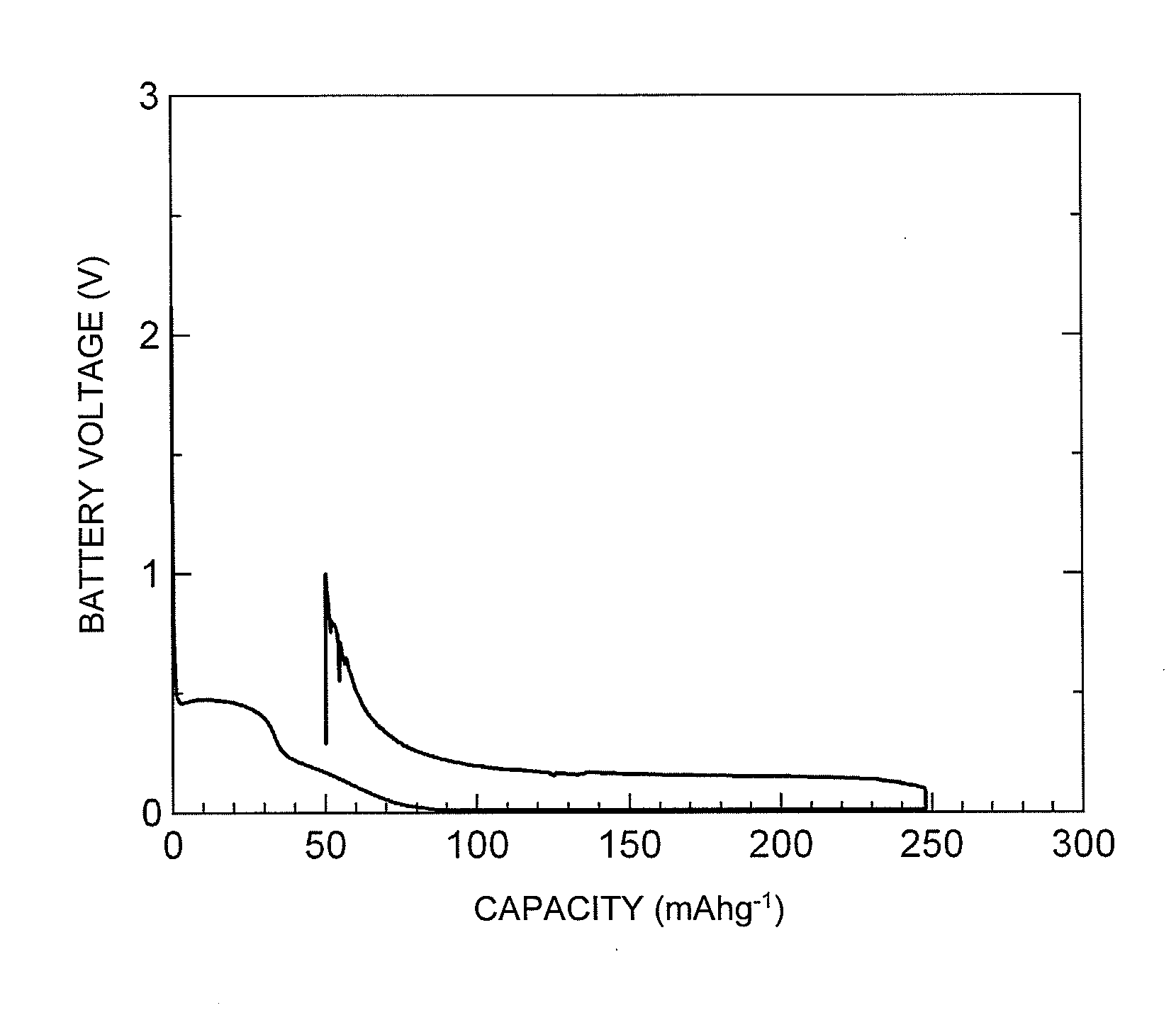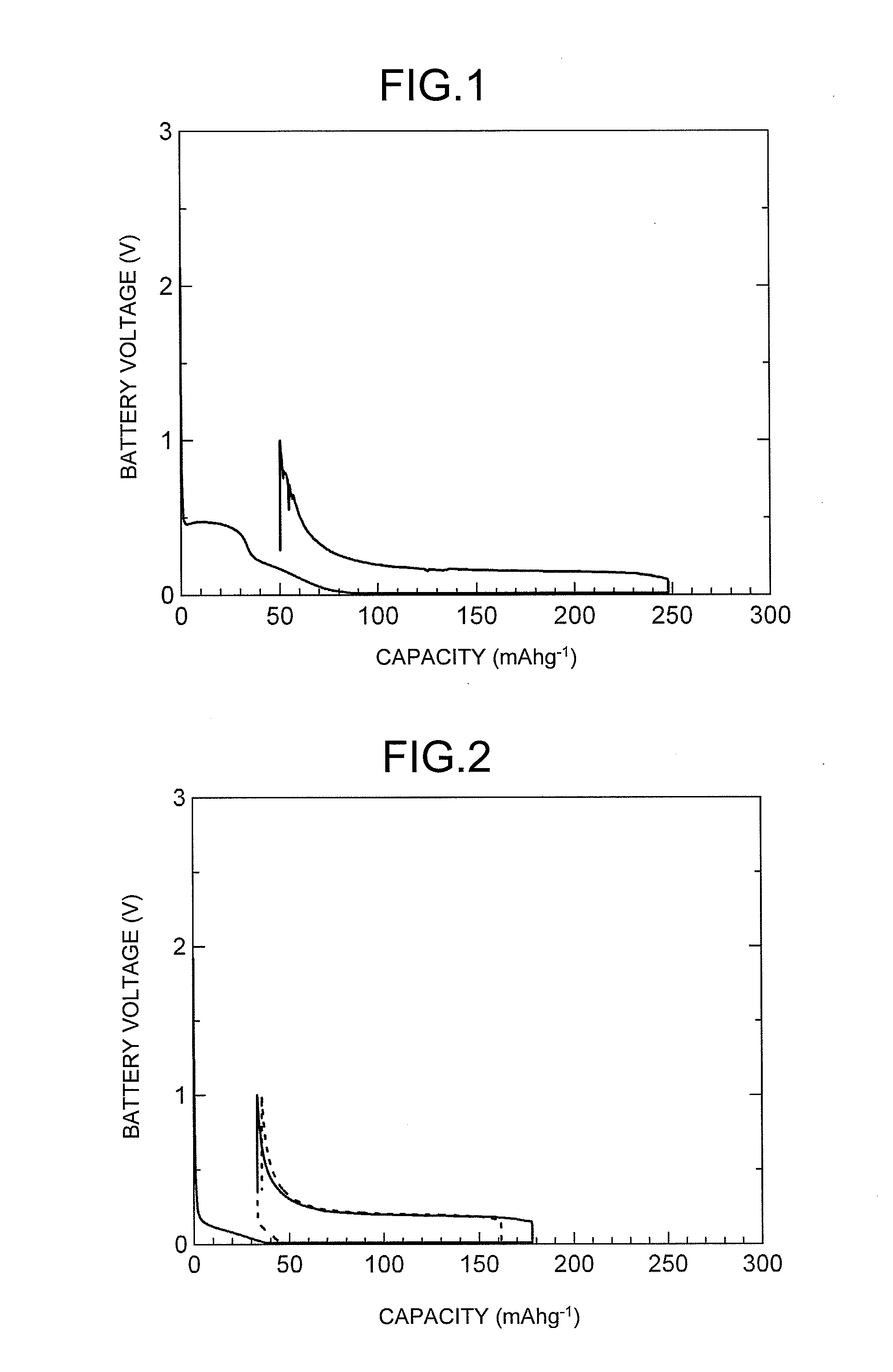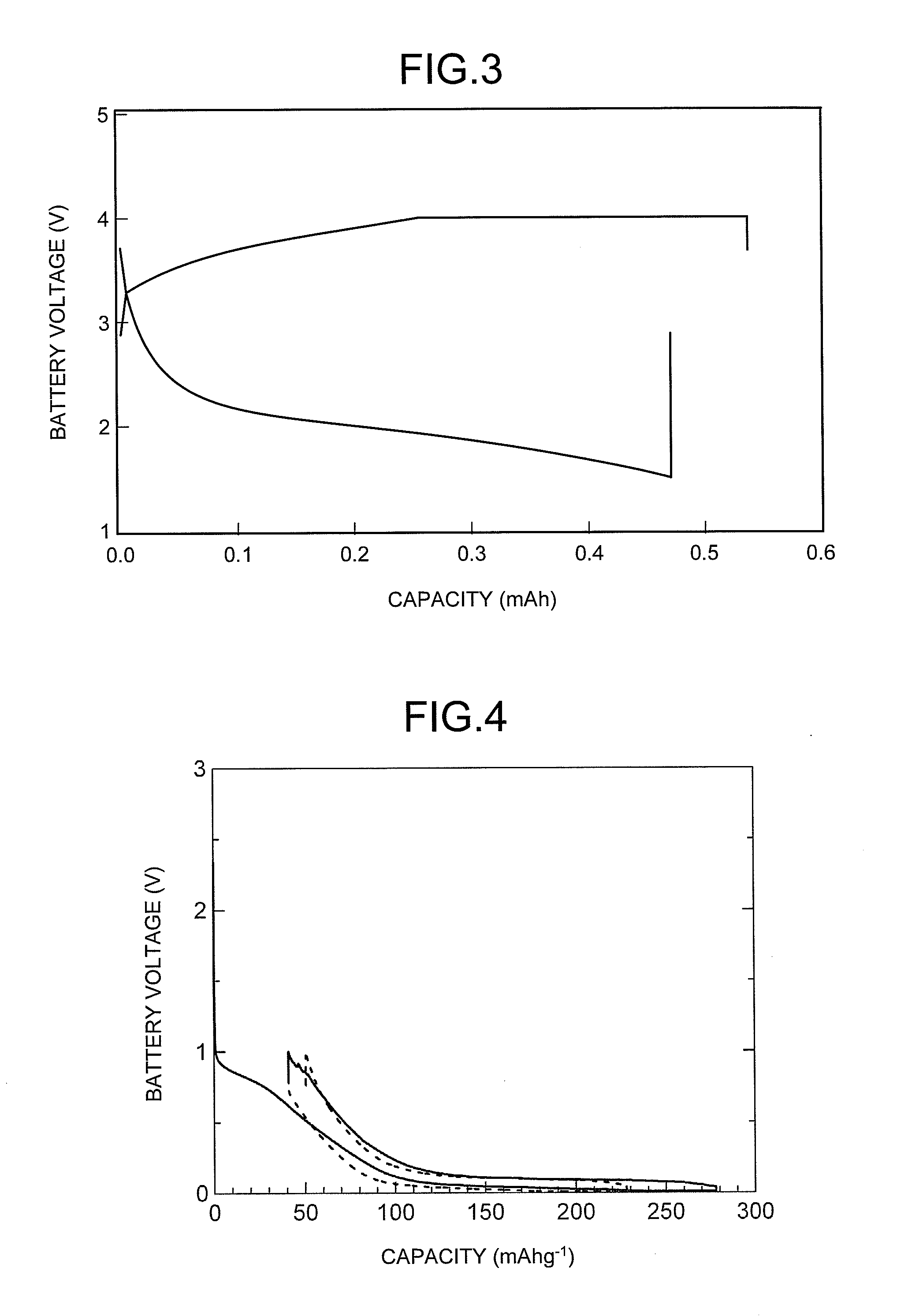Sodium ion secondary battery and negative electrode active material used therein
- Summary
- Abstract
- Description
- Claims
- Application Information
AI Technical Summary
Benefits of technology
Problems solved by technology
Method used
Image
Examples
examples 1 and 2
Charge and Discharge Performance Evaluation of Sodium Ion Secondary Battery According to the Present Invention
[0083](1) Production of Negative Electrode
[0084]A glassy carbonaceous material (manufactured by Tokai Carbon Co., Ltd., trade name “GC20SS”, which was granular and had an average particle diameter of the particles constituting the material of 12 μm, in which the particles all had a diameter of 30 μm or less, and the BET specific surface area of the material was 0.5 m2 / g) and polyvinylidene fluoride (PVDF) to be used as a binder were weighed so as to form a composition of glassy carbonaceous material:binder=95:5 (weight ratio). The binder was dissolved in N-methylpyrrolidone (NMP), and the glassy carbonaceous material was added thereto to form a slurry. The obtained slurry was applied with a doctor blade onto a 10 μm thick copper foil which serves as a negative electrode collector, and this was then dried with a dryer, and an electrode sheet was obtained. This electrode sheet...
example 3
Charge and Discharge Performance Evaluation of Sodium Ion Secondary Battery
[0096](1) Synthesis of Positive Electrode Active Material
[0097]In a glove box with an argon atmosphere, Na2O2 (manufactured by Flucka Chemie AG) and Fe3O4 (manufactured by Aldrich Chemical Company Inc.) were weighed so that the Na and the Fe were in a stoichiometric ratio of NaFeO2, and then thoroughly mixed in an agate mortar. The obtained mixture was placed in an alumina crucible, which was then placed in an electric furnace and kept at 650° C. for 12 hours. The crucible was removed from the furnace, and a positive electrode active material MC1 for a sodium ion secondary battery was obtained.
[0098](2) Production of Positive Electrode
[0099]The positive electrode active material MC1 obtained in the above described (1) and a conductive material were weighed so as to form a 70:25 composition, and then mixed in an agate mortar to obtain a mixture X. Then, polyvinylidene fluoride (PVDF) as a binder was weighed so...
examples 4 and 5
[0113]A test battery TB4 (Example 4, 1 M NaClO4 / PC electrolyte) and a test battery TB5 (Example 5, 1 M NaClO4 / EC+DMC electrolyte) were manufactured in the same manner as in Examples 1 and 2, respectively, except that a negative electrode EA4 was formed as a working electrode using GC10 (trade name), a glassy carbonaceous material, manufactured by Tokai Carbon Co., Ltd., which was granular and had an average particle diameter of the particles constituting the material of 6 μm, in which the particles all had a diameter of 20 μm or less, and the BET specific surface area of the material was 1 m2 / g for the negative electrode active material. The charge and discharge testing was performed on the obtained test batteries.
[0114]As illustrated in FIG. 4, the charge and discharge testing results for TB4 (Example 4) were a first cycle charging capacity of 279 mAh / g, and a discharge capacity of 241 mAh / g.
[0115]As illustrated in FIG. 5, the charge and discharge testing results for TB5 (Example 5...
PUM
 Login to View More
Login to View More Abstract
Description
Claims
Application Information
 Login to View More
Login to View More - R&D
- Intellectual Property
- Life Sciences
- Materials
- Tech Scout
- Unparalleled Data Quality
- Higher Quality Content
- 60% Fewer Hallucinations
Browse by: Latest US Patents, China's latest patents, Technical Efficacy Thesaurus, Application Domain, Technology Topic, Popular Technical Reports.
© 2025 PatSnap. All rights reserved.Legal|Privacy policy|Modern Slavery Act Transparency Statement|Sitemap|About US| Contact US: help@patsnap.com



